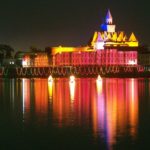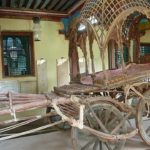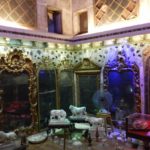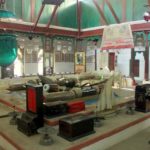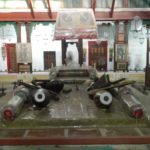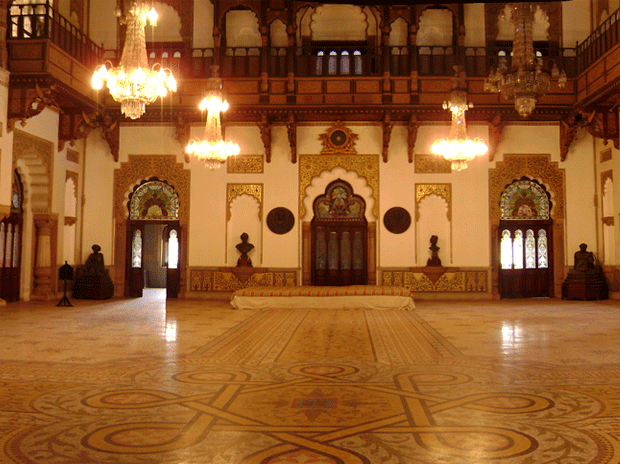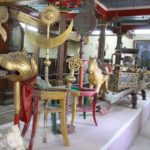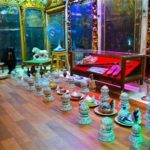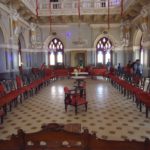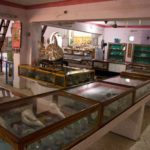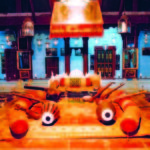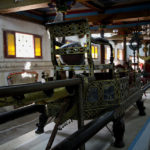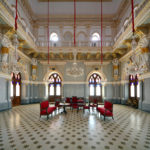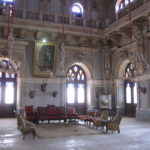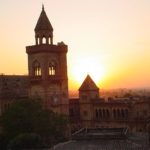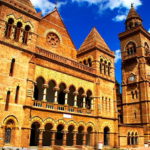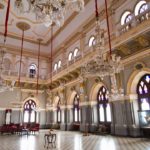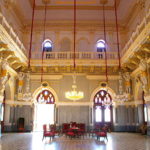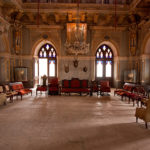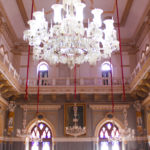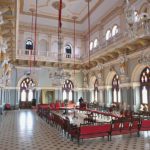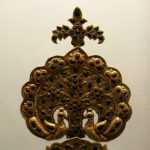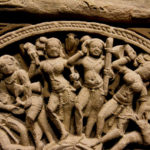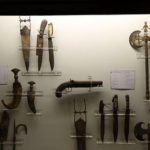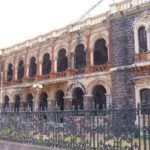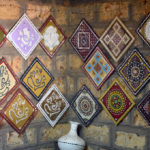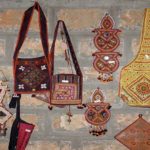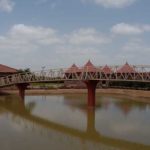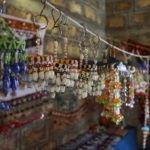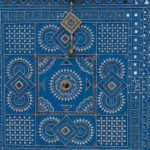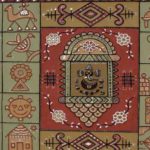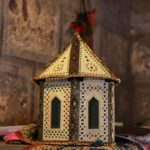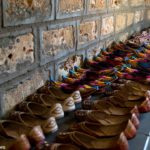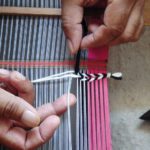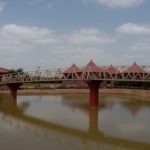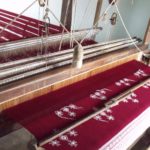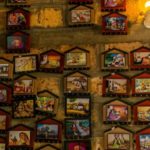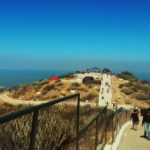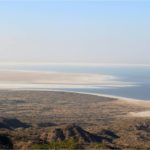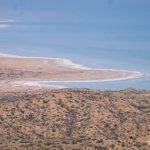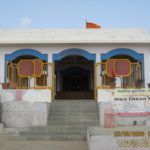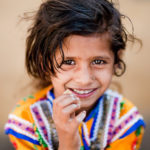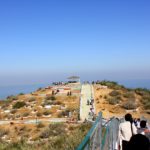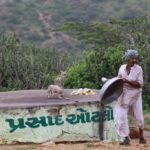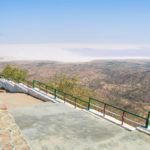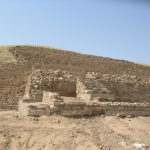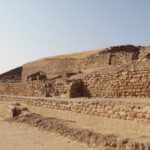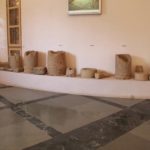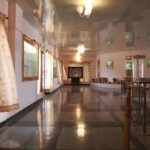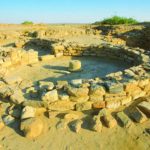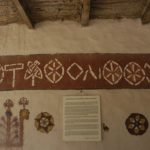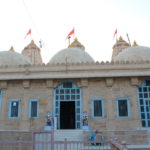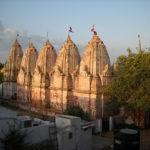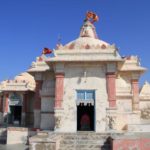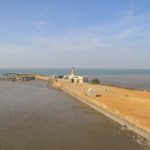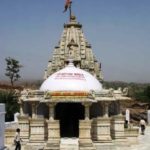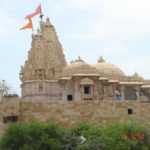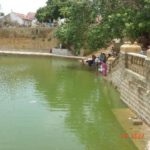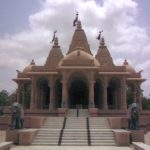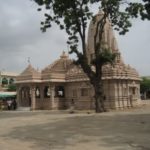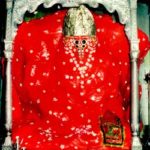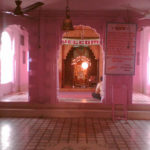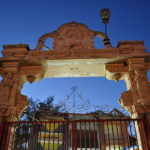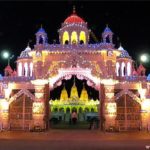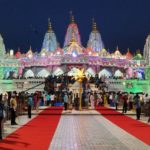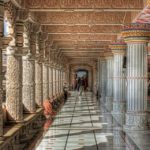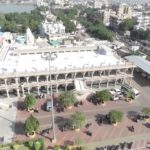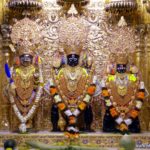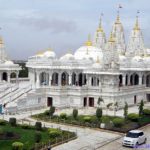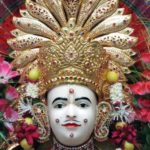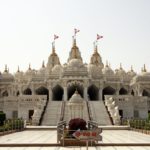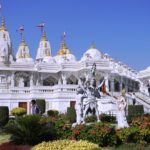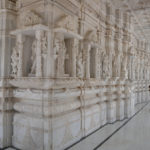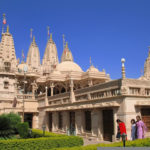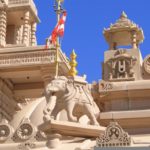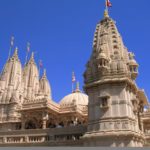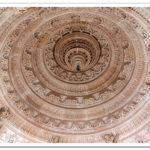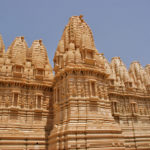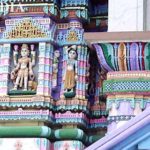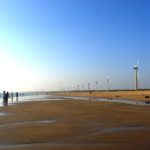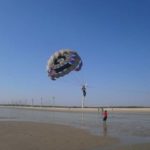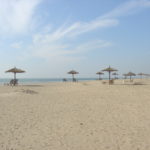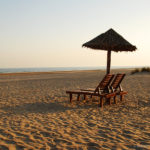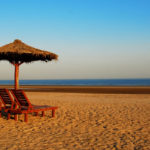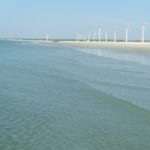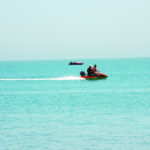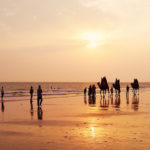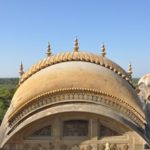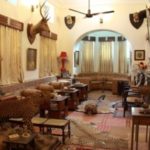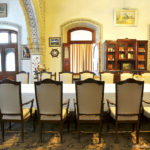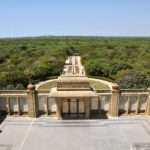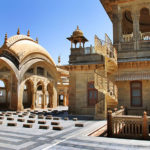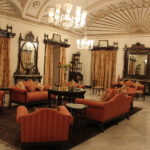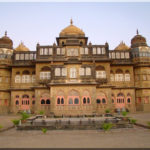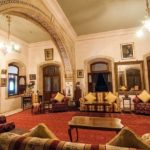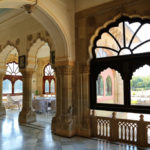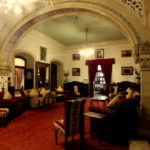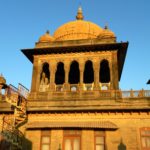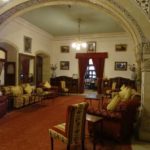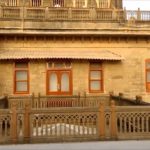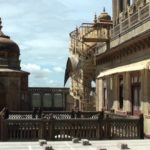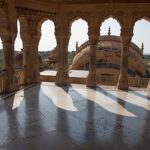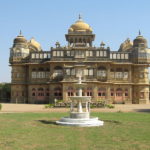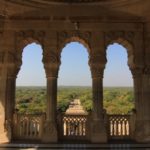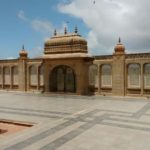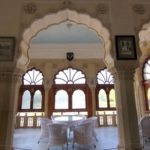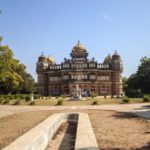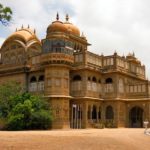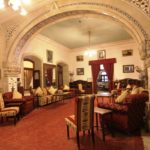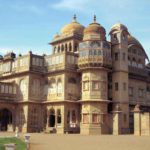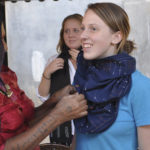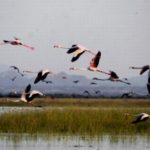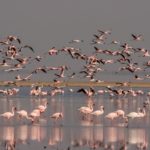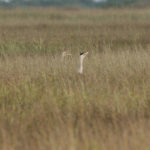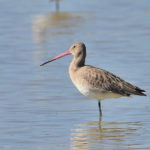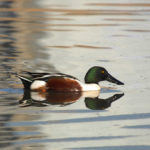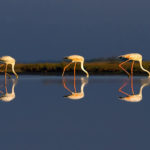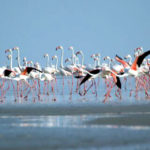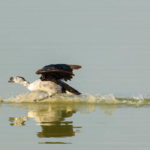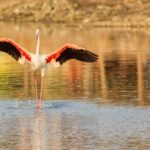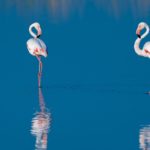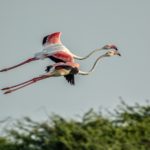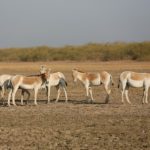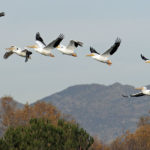Travel Tips
- Aina Mahal Bhuj
- Prag Mahal Bhuj
- Kutch Museum
- Bhujodi Art and Crafts
- Culture & Tradition Sites: Banni Villages & Kaladungar
- Archaeological Site – Dholavira
- Narayan Sarovar Temple
- Koteshwar Temple
- Mata no Madh
- Swaminarayan Temple Bhuj
- Bhadreshwar Jain Temple
- Mandvi Beach
- Vijay Vilas Palace
- Tunda Vandh Mundra
- Wildlife Sites: Chhari-Dhandh Bird Sanctuary
- Travel Tips (Kutch)
The Aina Mahal palace, or “Hall of Mirrors” was built during the flamboyant rule of Lakhpatji in the middle of the 18th century. The palace was designed it in a mixed Indo-European style and with its beautiful carved doorways, elaborate window boxes and balconies it is worth exploring.
This is a palace commissioned by King Pragmalji in the 1860s, designed by Colonel Henry Saint Wilkins in the Italian Gothic style and built in the middle of Bhuj next to the Aina Mahal. While little about it may seem Indian, there are elements; see if you can find them. In the courtyard behind the palace, there is a small Hindu temple with very nicely carved stonework. you can visit the main palace halls as well as climb stairs of the 45m bell tower for an exhilarating view of the city.
During Visit to Bhuj Town must see is the quaint Kutch Museum-the oldest in Gujarat. Regarded as one of the best, this museum has an excellent collection founded in 1877. Walking through the maze of winding streets takes visitors to the exquisite Aaina Mahal (palace of mirrors). The Prag Mahal is a beautiful Italian Gothic style palace built by Maharao of Bhuj.
Just 8 km southeast of Bhuj, Bhujodi is a major textile center of Kutch, with the vast majority of the 1200 inhabitants involved in textile handicraft production. Here you can meet weavers, tie-dye artists and block printers, most of whom belong to the Vankar community. Many will let you watch them work; just ask around.
The villages of the Kutch region specialize in a different form of handicrafts. Some of the more important villages Niroona (Rogan Art and Bells), Hodko, Dhorodo and Ludiya, a permission is to be taken from the check post to visit this area due to its proximity with Pakistan.
Kaladungar also known as the Black Hills, overlooks the spectacular Rann, the view from the top is a sight that one can never forget. One can spot some rare species of white foxes these beautiful, frisky animals staying in the wild respond to the call of the temple priest as he beats a steel plate yelling “langa” to suggest that food has been laid out for them.
Located on the north-west corner of the Khadir Island, lies the ancient city of Dholavira. It was discovered from under mounds of earth in the year 1967. These excavation sites are one of the largest Harappan sites in India, a part of the Indus valley civilization and are believed to be more than 5,000 years old. The excavations have revealed many ancient artifacts, like seals, beads, animal bones, gold, silver, terracotta ornaments and vessels. Some of these items are linked to Mesopotamia, which proves that it was a major port and trading center of those times. The most fascinating discovery of Dholavira is the large inscription, comprising of ten letters in the Indus script. Each letter has been engraved on slices of crystalline material.
Narayan Sarovar, literally means “the Lake of Narayan (Lord Vishnu)”. This place has five sacred lakes, among one of which the temple complex is located. This is one of the revered pilgrim spots for Hinduism in Kutch.
This pilgrim spot of Kutch is located near Lakhpat town. The sanctum sanctorum houses a Shiva Linga. The place is closely linked with the great Indian epic Ramayana. According to Hindu mythology, Ravana was bestowed with a Shiva Linga by Lord Shiva. If he worships the linga he will attain immortality. However, he dropped the linga on the ground and there sprouted nearly thousands of lingas. The Koteshwar temple was built at this place.
Further west of Kakkadbhit is a temple dedicated to the deity of Jadejas, the erstwhile rulers of Kutch. The original temple, which was demolished in the earthquake of 1819, was believed to be 1200 years old. Sunderji Saudagar built a new temple in its place with unique architectural expositions of dimensions and space. The main structure rises to the height of 52 feet. Navratri is also celebrated here.
Like most Swaminarayan temples, this one has the typical brightly colored woodcarvings around the building, mostly depicting Lord Krishna and Radha.
There are a number of temples built by Jain followers in Kutch. The Bhadreshwar temple, one of the most ancient temples situated in Bhadrawati, considered a very holy place is one such. Bhadrawati was ruled by King Sidhsen in 449 B.C (according to the Hindu calendar) who renovated the place. Later it was ruled by The Solankies who were Jains, and they changed the name to Bhadreshwar. Then in 1315, a great famine struck Kutch, after which the place was renovated by Jagadusha.
Mandvi is a small town located about 50 kms from Bhuj. Main attraction of Mandvi is obviously its pristine beach. It has powdery white sands and is pretty long due to which it never feels crowded. You can always find a calm spot after a short walk and enjoy the beautiful sunset.
One of the key attractions in Mandvi is Vijay Vilas Palace that was the summer retreat of the Maharaos of Kutch. Crowned by elegant chhatris (cenotaphs), this sandstone-hued edifice was built in the 1930s. A flight of steps leads up to the grandest of chhatris that stands on a lofty platform. This is the place where fifteen veeranganas (brave women) who belonged to the court of Maharao Lakhpat committed jauhar (self-immolation) after his death. What is surprising to learn is that none of these women were his wedded queens but only his loyal companions.
A unique Rabari village, it has about 125 exquisitely designed Kachchhi huts inhabited by about 400 Rabaris. Most of the male population is generally away from the village. The interiors of the huts present a pleasant spectacle of native art. A chat with the womenfolk will introduce visitors to this insulated and pristine culture, a world so different.
The Chhari-Dhand wetland conservation reserve is located on the edge of arid Banni grasslands and the marshy salt flats of the the Rann. Chhari means salt affected and Dhand means shallow wetland, this is a seasonal desert wetland and only gets swampy during a good monsoon. It is home to nearly two lakh birds with migratory and endangered species of birds flocking into the area in thousands during monsoon and winter.
The marshy Rann of Kutch is one of the most potential habitat for numbers of animal and birds this area is known to be a breeding ground for flamingoes and staging ground for pelicans, cranes, storks and many species of waterfowl.
Kutch is the largest district of Gujarat wherein as many as 18 varied tribes live harmoniously, inspite of their distinct language, culture and customs. This is what makes it a paradise for cultural tourist worldwide.
Kutch Mahotsav or the great Kutch festival is organized during December – January every year near the days when Shivratri is celebrated in Gujarat. It offers access to the interior and beautiful recesses of the dessert district. Colorfully attired dancers, music concerts, Sindhi Bhajan performances, Langa Desert Music and shops selling traditional Kutchi embroideries and jewelry are to be enjoyed.
The dessert like Rann Of Kutch occupies a big part of the region. Mostly marshy, the Rann runs into the horizon. During summer it is dry and has a white coating of salt. In India’s monsoon, the flat dessert of salty clay and mudflats, averaging 15 meters above sea level, fills with standing waters, interspersed with sandy islets of thorny scrub, breeding grounds for some of the largest flocks of greater and lesser flamingos. The Rann Of Kutch is home to a wide array of flora and fauna. Migratory birds deem it an abode during diverse weather conditions. The Rann is also famous for the Indian Wild Ass Sanctuary, the Little Rann of Kutch, where the last of three species of Asiatic wild ass (Equus hemionus khur or khar) still exists along with wolves, foxes, jackals, chinkara gazelles, nilgai antelope and blackbucks as well as 13 species of lark.
The Rann of Kutch is a seasonally marshy saline clay desert located in the state of Gujarat, India.
Kutch is famous for handicrafts, Hills, white deserts, beautiful virgin sea beaches, various forts and above all DHOLAVEERA, an 5000years old culture which is digging our from sands.
Kutch’s Spectacular Spots
- Aina Mahal
- Greater Rann [The White Desert]
- White Desert
- Bird Sanctury
- Mandvi Beach
- Narayan Sarovar
- Hajipir
- Dholavira.
- Mata na Madh
- Rudramata Dam, (12 kms from Bhuj on the way to Khavda).
Buy
Kutch is also famous for exquisite crafts like embroidery, applique work bed sheets and cushion covers. The ever so popular Bandhani (tie and die) fabrics, enameled silverware and other handicrafts are also found here and are a thing of interest for tourists. Around the Wild Ass Wildlife Sanctuary, you may shop for Patola Silk Sarees, Bandhanis, Ghagra-cholis and marriage costumes. You will also find interesting wall hangings, embroidered quilts, cradle clothes, cloth toys, embroidered footwear, lacquer furniture and curios. Kutch is very much spread over west-south of ran & it is difficult to go without escorts.
Eat
Hotels & vegetarian food is available. Mostly of the eatables are made out of milk, bajara and wheat. Kutch’s staple diet does not include rice but pulses (dal) are available.
Drink
Alcoholic drinks are prohibited in Kutch. Tea is the most popular drink in this regions irrespective of gender or caste. Black tea is considered as a sign of mourning and is not given to guests. For personal use foreigners are allowed to bring one-two bottles of alcohol with them. Mineral water bottles are available at cheap rates.
Distance – Bhuj from Major Town
| Ahemdabad | 350 Kms |
| Baroda | 445 Kms |
| Rajkot | 240 Kms |
| Kandla | 71 Kms |
| Gandhidham | 60 Kms |
| Mandvi | 60 Kms |
| Zainabad | 270 Kms |
| Dasada | 278 Kms |
| Gir | 388 Kms |

